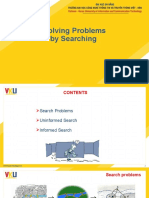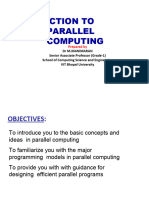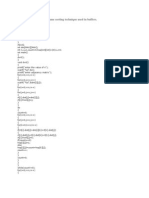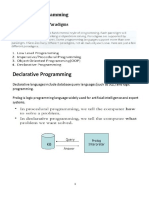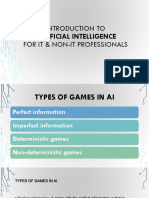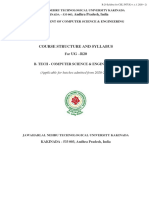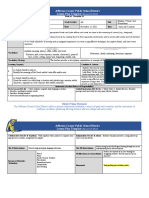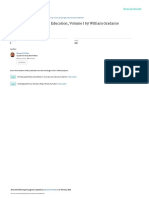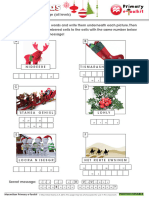KNOWLEDGE
REPRESENTATION AND
REASONING
UNIT V – KNOWLEDGE SOUP
Presented By
Dr. SK. Karthika
Assistant Professor
Department of Computer Science & Engineering
QIS College of Engineering & Technology
TOPIC 1 – VAGUENESS, UNCERTAINITY,
RANDOMNESS AND IGNORANCE
• Knowledge Soup
• The inconsistencies arise from various sources
(i) Generalizations that omit "obvious" assumptions
(ii) Abnormal conditions
(iii) Incomplete definitions
(iv) Conflicting defaults
(v) Unanticipated applications
Topic 1 - Continued
• Multiple Uses of Same Words
Topic 1 - Continued
Vagueness in Scientific Knowledge
Topic 1 - Continued
• Paradox of the Heap
• Liquids
Topic 1 - Continued
Topic 1 - Continued
Topic 1 - Continued
• Multiple Perspectives
• Intentional Granularity
TOPIC 2 – LIMITATIONS OF LOGIC
• Case Based Reasoning
Topic 2 - Continued
Exceptions
Topic 2 - Continued
Prototypes and Definitions
Propositions and Continuous Models
TOPIC 3 – FUZZY LOGIC
• Fuzzy Logic
• Statistics
• Neural Networks
• Virtual Reality
Fuzzy Predicates and Operators
Topic 3 - Continued
Topic 3 - Continued
• Computing Certainty Factors
Topic 3 - Continued
• Context Dependence
• Fuzzy Control systems
Topic 3 - Continued
Topic 3 - Continued
• Analog Control Systems
• Criticism of Fuzzy Logic
(i) Incomplete Generalization
(ii) Abnormal conditions
(iii) Incomplete Definitions
(iv) Conflicting Defaults
(v) Unanticipated Applications
• Quantifying Continuity and Vagueness
TOPIC 4 – NONMONOTONIC LOGIC
• Variation By Discrete Steps
Topic 4 - Continued
• Defaults in Frames
Topic 4 - Continued
• Open and Closed Worlds
(i) Closed Worlds
(ii) Open Worlds
• Knowledge and Belief
• Conflicting Defaults
Topic 4 - Continued
Topic 4 - Continued
• To represent those dependencies, some graph or network-based approaches
have been developed:
(i) Inheritance with Defaults
(ii) Truth Maintenance Systems
• Computational Complexity
TOPIC 5 – Theories, Models and the
World
Topic 5 - Continued
• Facts, Fictions and Hypotheses
Topic 5 - Continued
Topic 5 - Continued
• Finding the Best Theory
• Navigating the Lattice of Theories
Topic 5 - Continued
• Intermediate Steps
(i) Contraction
(ii) Expansion
• Theory Revision
• Abduction
Various Levels of complexity
(i) Reuse
(ii) Revise
(iii)Combine
Topic 5 - Continued
Topic 5 - Continued
• Combining Knowledge Sources
TOPIC 6 - SEMIOTICS
• The knowledge soup consists of collections of signs- images, symbols, words,
and concept: S with associated feelings.
• An important step toward managing the complexity of the knowledge soup is
to analyze and classify the kinds of signs it contains.
• The study of signs, called semiotics, was independently developed by C. S.
Peirce and the linguist Ferdinand de Saussure.
• The term comes from the Greek sema (sign); Peirce originally called it
semeiotic, and Saussure called it semiology, but semiotics is the most common
term today.
Topic 6 - Continued
• Semiotics is divided into 3 branches
(i) Syntax
(ii) Semantics
(iii)Pragmatics
• Arbitrary Nature of Symbols
• Classes of Signs
Topic 6 - Continued
Topic 6 - Continued
• Material Trichotomy
(i) Qualisign
(ii) Sinsign
(iii)Legisign
• Relational Trichotomy
(i) Icon
(ii) Index
(iii)Symbol
Topic 6 - Continued
• Formal Trichotomy
(i) Rheme
(ii) Dicent Sign
(iii)Argument
• Semiotic Analysis
• Applications of Semiotics
TOPIC 7 – KNOWLEDGE SHARING AND
ACQUISITION – SHARING ONTOLOGIES
• Three aspects of Knowledge Representation
(i) Logic
(ii) Ontology
(iii)Computation
• Problems of Aligning Ontologies
Topic 7 - Continued
Topic 7 - Continued
Topic 7 - Continued
• Ontologies and Axioms
(i) Information retrieval
(ii) Machine translation
(iii)Database Question Answering
(iv)Problem Solving
(v) Automatic Programming
• Natural Languages and Problem Solving
• Representations for Problem Solving
• Elaboration Tolerance
TOPIC 8 – CONCEPTUAL SCHEMA
Topic 8 - Continued
Topic 8 - Continued
• Integrated Systems
• Universal Languages
2 kinds – Natural Languages, Logic
• Need for Logic
• Entity Relationship Diagrams
Topic 8 - Continued
Topic 8 - Continued
• Conceptual Graphs and KIF
Topic 8 - Continued
• Quantifiers
Topic 8 - Continued
Topic 8 - Continued
• Query Graphs
Topic 8 - Continued
TOPIC 9 – ACCOMODATING MULTIPLE
PARADIGMS
• Trees
Topic 9 - Continued
Topic 9 - Continued
• Parse Tree
Topic 9 - Continued
Topic 9 - Continued
Topic 9 - Continued
• Models and Metamodels
Topic 9 - Continued
Topic 9 - Continued
Topic 9 - Continued
Topic 9 - Continued
Topic 9 - Continued
• Unified Modeling Language
Four Levels
(i) Metameta model
(ii) Meta model
(iii)Model
(iv)Application
Topic 9 - Continued
TOPIC 10 – RELATING DIFFERENT
KNOWLEDGE REPRESENTATIONS
Topic 10 - Continued
Topic 10 - Continued
• Answering Queries
Topic 10 - Continued
• Mapping to Natural Language
Topic 10 - Continued
TOPIC 11 – LANGUAGE PATTERNS
• Co-occurrence Patterns
Topic 11 - Continued
• Verb Patterns
Topic 11 - Continued
• Subject Patterns
• Object Patterns
• BUT Test
Topic 11 - Continued
• Business Rules and Types
TOPIC 12 – TOOLS FOR KNOWLEDGE
ACQUISITION
• Conceptual Schema Modeling Facilities
Topic 12 - Continued
• Varieties of Domain Knowledge
• Semantic Memory includes 5 types of information – Ontology,
Definitions, Constraints, Defaults, Behaviour
Topic 12 - Continued
• Mapping Specifications to Logic
Topic 12 - Continued
• Controlled Natural Language






